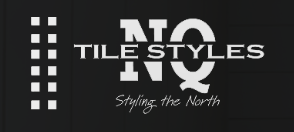When choosing tiles for your home, one of the most overlooked yet critical factors is whether to go for rectified tiles or non-rectified tiles. Understanding the difference can help you achieve the aesthetic, durability, and overall look you desire for your space. So, let’s dive deep into what these terms mean, their benefits, and how to decide which tile is best suited for your home. Need help with choosing the right tile for your home? Our another blog provide you with valuable insights and sample options to make a more informed choice.
rectified tiles or non-rectified tiles
What Are Rectified Tiles?
Rectified tiles, also referred to as sharp-edged tiles, undergo a mechanical process after being fired in the kiln. During this process, the tiles' edges are precisely cut or ground to achieve a uniform size and perfectly straight edges. This precise manufacturing allows rectified tiles to have very minimal grout lines, giving a clean and seamless finish.
Key Characteristics of Rectified Tiles:
Sharp, straight edges
Uniform dimensions
Allows for smaller grout lines (typically 1-2mm)
Modern, sleek appearance
Common Uses: Rectified tiles are ideal for contemporary interiors, large open spaces, and areas where a clean, seamless look is preferred.
What Are Non-Rectified Tiles?
Non-rectified tiles, sometimes called cushioned edge tiles or natural tiles, are left in their original state after firing. This means their edges may have slight irregularities, giving them a more natural and rustic appearance. These tiles usually require slightly larger grout lines to accommodate any edge variations.
Key Characteristics of Non-Rectified Tiles:
Natural, slightly uneven edges
Slight size variations
Requires larger grout lines (3-5mm or more)
Traditional, rustic aesthetic
Common Uses: Non-rectified tiles work well for traditional homes, country-style kitchens, and areas where a more natural, textured look is desired.
Rectified Tiles vs Non-Rectified Tiles: The Key Differences
Advantages of Rectified Tiles
Modern Aesthetic: The precise edges and minimal grout lines make rectified tiles the perfect choice for modern and contemporary interiors.
Seamless Finish: If you want a smooth, clean look with barely visible grout, rectified tiles are the ideal solution.
Perfect for Large Spaces: In open areas, rectified tiles create a continuous flow, enhancing the sense of space.
Ideal for Large Format Tiles: Large-format tiles (like 600x600mm or 800x800mm) often come rectified for a more uniform installation.
Advantages of Non-Rectified Tiles
Natural Appeal: Non-rectified tiles bring warmth and a traditional charm, making them perfect for rustic or classic designs.
Cost-Effective: Generally, non-rectified tiles are more affordable since they don’t require additional cutting or finishing processes.
Easier Installation: The slightly irregular edges are more forgiving during installation, making these tiles easier to work with.
Hides Imperfections: Larger grout lines can help mask slight imperfections in the tiling process or uneven surfaces.
Where to Use Rectified Tiles
Living Rooms & Open Areas: Achieve a sophisticated, expansive look with minimal grout lines.
Bathrooms: For a clean and seamless finish, especially in modern bathrooms.
Kitchens: Large-format rectified tiles provide a sleek, low-maintenance kitchen floor.
Popular Choices: Polished porcelain, large-format tiles, and marble-look tiles.
Where to Use Non-Rectified Tiles
Rustic Kitchens: Non-rectified tiles complement farmhouse or vintage-style kitchens.
Outdoor Spaces: The natural, imperfect edges suit patios, balconies, and garden pathways.
Traditional Homes: Perfect for classic interiors where authenticity and character matter.
Popular Choices: Terracotta tiles, ceramic tiles, and handmade tiles.
Things to Consider When Choosing Between Rectified and Non-Rectified Tiles
Your Home’s Style: Modern homes generally benefit from rectified tiles, while traditional or rustic homes look great with non-rectified tiles.
Budget: Rectified tiles are slightly more expensive, so factor this into your budget.
Installation Complexity: Installing rectified tiles requires precision and skilled professionals due to their sharp edges.
Maintenance: Smaller grout lines in rectified tiles are easier to clean, making them suitable for busy households.
Tile Size: Large-format tiles usually come rectified, while smaller tiles often have cushioned edges.
Which Tile Is Best for Your Home?
Choosing between rectified and non-rectified tiles ultimately depends on your design preferences, budget, and installation needs:
Choose Rectified Tiles if you want a sleek, modern look with minimal grout lines and are prepared for slightly higher installation costs.
Choose Non-Rectified Tiles if you prefer a rustic, natural look and want a more forgiving, cost-effective option.
Conclusion
Both rectified and non-rectified tiles have their unique advantages, and the choice comes down to your personal style and needs. Whether you’re creating a contemporary masterpiece or a cozy, traditional space, understanding the differences will ensure you make an informed decision.
If you’re still unsure, consult a professional tiler or visit NQ Tile Styles to see samples of both options in person. With the right choice, your tiles can transform your home into a stunning space that reflects your style.
Which tiles are you choosing for your next project? Share your thoughts in the comments!






